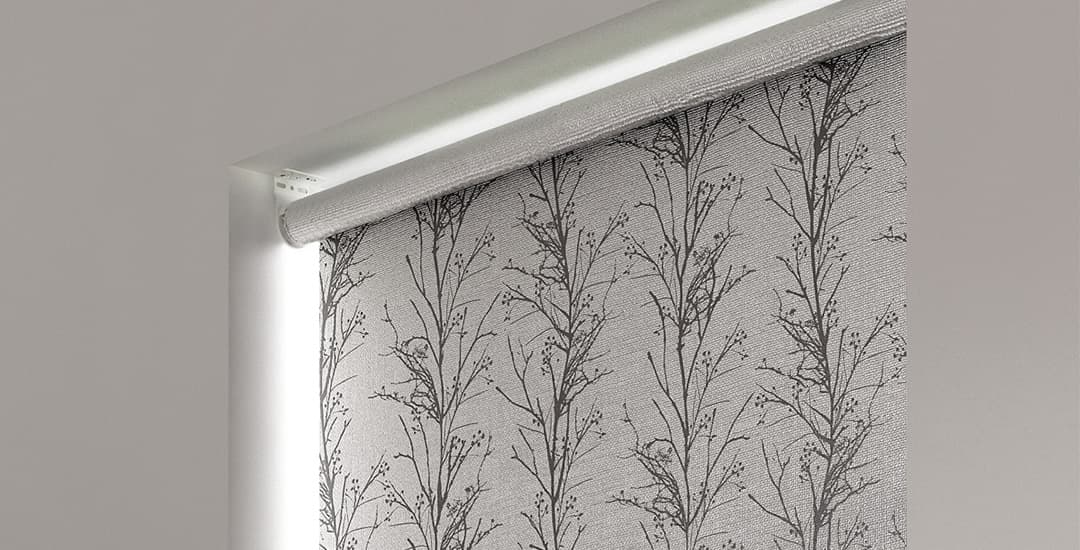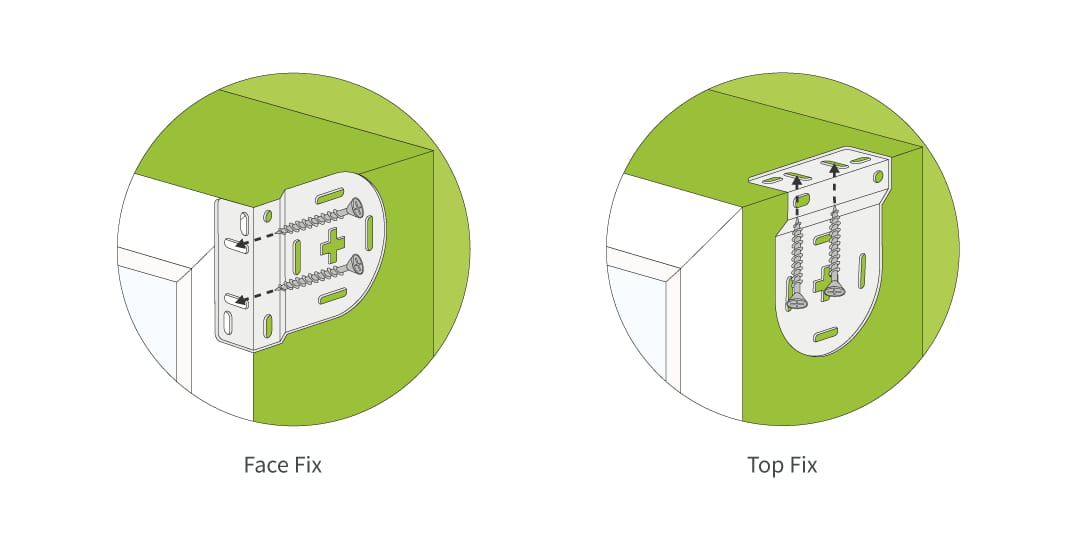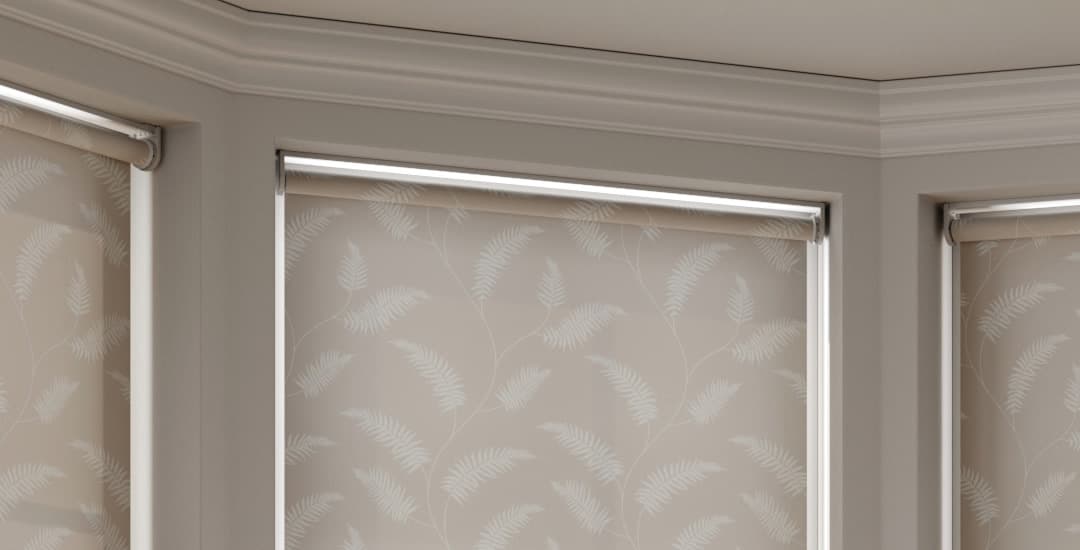
Generally, face-fixed roller blinds will stick out by around 70mm (2¾”), and top-fixed roller blinds will stick out by about 50mm (2” ). This varies a little from manufacturer to manufacturer, but there’s not much in it; and these exact measurements are how far roller blinds stick out when it comes to the ones we make and sell.
You might find that readymade roller blinds will stick out a little less, but not by much, and this only happens because readymade roller blinds tend to be made down to a price, and have a narrower tube as a result (and one that is often made of plastic or cardboard) and so, that has a smaller profile to accommodate for when hanging.
If you’re wondering why it matters how far roller blinds stick out, and what is meant by the terms “face fixed” and “top fixed” respectively, this blog post will tell you everything you need to know.
What’s the difference between face-fixed and top-fixed roller blinds?

We use the terms top fixed and face fixed respectively to describe where the brackets of your roller blinds fit to the wall or window recess that you’re hanging them in/on.
Face-fixed roller blinds are those with their brackets screwed to the wall just above and either side of the window or window recess – onto the vertical sheer surface of the wall. Top fixed roller blinds have the brackets screwed to the underside of the horizontal surface of the alcove above the window; or less commonly, to the ceiling of the room if hung outside of the recess.
Which position you hang your blinds in (and you can hang roller blinds in either position to allow you the maximum number of options for where and how they hang – the brackets you receive with your blind allow for both) dictates how far they stick out from the wall or window.
How deep are roller blind brackets?
For our roller blinds, the brackets are 70mm deep when face-fixed, and 50mm deep when top-fixed. Broadly, this is a good approximation of the sort of measurements you will find from most manufacturers of good quality made-to-measure blinds, give or take 5mm or so.
How far do roller blinds protrude if face-fixed?
Our face-fixed roller blinds will stick out by around 70mm (7cm, or 2 ¾ inches), and this is a reasonable average across made-to-measure blinds manufacturers; you might find some around the 75mm mark, but roller blind bracket sizes are fairly similar regardless of whom you buy from, albeit the quality can vary from manufacturer to manufacturer.
How far do roller blinds stick out if top-fixed?
Our top fixed roller blinds will stick out by about 50mm (5cm, or a shade under 2”) and again, there might be a little variance from one manufacturer to another, but this is a broad norm.
Why does it matter how far roller blinds stick out?

The big question then! Generally, you might need to know with a reasonable degree of accuracy how far roller blind brackets stick out and so, how far from the window glass or alcove wall they will fall, for a couple of reasons.
If you have window handles on the inside/opening inwards, this is one reason, as you’d need to be sure your blind clears the handles. The same applies if you intend to fit a roller blind on an inwards-opening door, as the bracket on the hinge side might hit the wall it opens onto if you get things wrong!
It’s important to know how far your roller blinds will stick out in particular if you’re buying for bay windows, where each window section meets at an angle; because the brackets for the roller blind on each section will also meet at an angle. You can find out how to measure up for blinds for a bay window within our Angled Bay Window Measuring Guide and our Square Bay Window Measuring Guide, depending on which variety you’re dealing with.
Finally, if you’re buying blackout roller blinds to try to achieve a full blackout in your room, the best way to hang them is face fixed over the window recess with at least 10cm extra fabric covering the recess on all four sides. Plus, the more closely the blind’s brackets and so, blind lies to the wall, the more effective the blackout result will be, as the gaps at the sides for light to creep around will be that much smaller.




